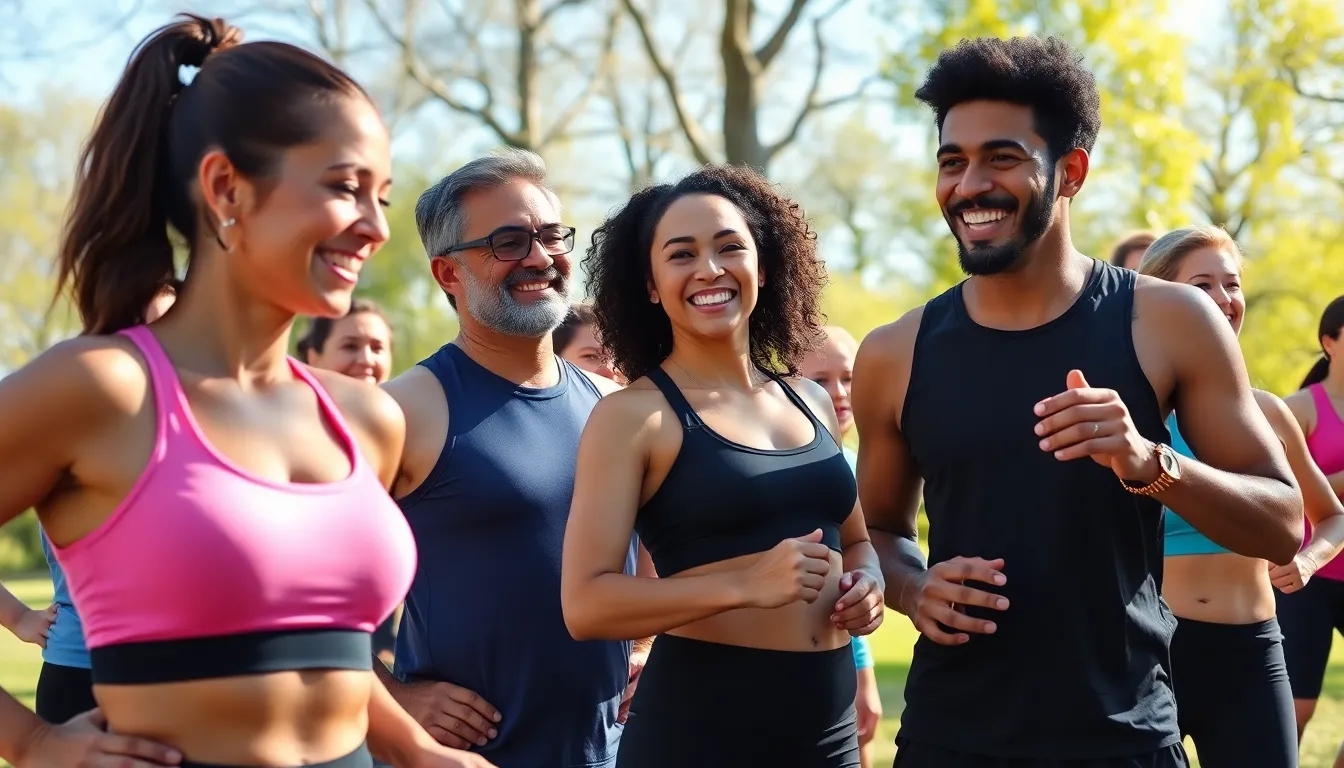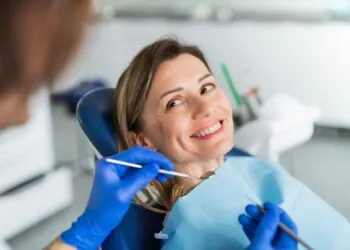In a world where scrolling through feeds has become a daily ritual, it’s time to ask the million-dollar question: how does social media impact physical health? While it connects friends and fuels viral dance challenges, it also comes with a side of couch potato syndrome and the infamous “like” thumb strain.
From the endless stream of fitness influencers flaunting their six-pack abs to the late-night doom scrolling that sabotages sleep, the effects of social media on health are as complex as a TikTok dance routine. It’s not all bad news, though. Understanding these impacts can help navigate the digital landscape while keeping both body and mind in tip-top shape. So grab your phone, and let’s dive into the quirky world of social media’s influence on physical health—because who knew your social feed could double as a health coach?
How Does Social Media Affect Physical Health
Social media significantly shapes physical health through diverse pathways. Positive aspects include enhanced social connections that motivate individuals to engage in physical activities. Communities formed on platforms often share fitness goals and tips, fostering a culture of accountability.
Negative impacts often arise from excessive screen time, leading to sedentary behavior. Many users spend hours browsing feeds, which increases the risk of obesity and related health issues. Furthermore, social media can disrupt sleep patterns, especially when individuals scroll late into the night. Studies show that blue light exposure from screens affects melatonin production, compromising sleep quality.
Mental health also intertwines with physical health through social media. Users frequently compare themselves to others, which can lead to anxiety and depression. Such feelings may discourage participation in physical activities, creating a cycle of inactivity.
Research indicates that the content individuals consume has a direct effect on their behaviors. Viewing fitness journeys can inspire positive changes, while exposure to negative body images can deter self-esteem and motivation. Increased awareness helps users curate their feeds to align with health-promoting messages.
Recognizing the dual-edge nature of social media enables individuals to achieve a balance. They can leverage connections to foster fitness while remaining mindful of the potential pitfalls. Interacting with supportive communities enhances accountability and inspires healthier habits, benefiting both physical and mental well-being.
Relationship Between Social Media and Physical Health

Social media profoundly influences physical health through both beneficial and detrimental pathways.
Positive Effects
Social media promotes fitness trends by connecting individuals with similar goals. Users often find motivation from online communities that celebrate healthy lifestyles. Engaging with supportive content can increase physical activity, as members share workout routines and success stories. Many users report feeling inspired to participate in fitness challenges, further enhancing personal commitments to health. Additionally, platforms provide access to wellness resources and expert advice, helping people make informed choices. Social media fosters accountability among users, which can lead to consistent engagement in physical activities.
Negative Effects
Excessive screen time frequently leads to a sedentary lifestyle, contributing to obesity and related health issues. Increased use of social media can disrupt sleep patterns, primarily due to blue light exposure from devices. Many individuals experience anxiety when comparing themselves to idealized representations online, which may discourage physical activity. More time spent scrolling through feeds often replaces time that could be dedicated to exercise or outdoor activities. Vulnerability to negative body image messages can result in low self-esteem and decreased motivation to stay fit. These factors illustrate the complex challenges posed by social media’s influence on physical health.
Mental Health Connection
The relationship between social media and mental health significantly influences physical well-being. Understanding this connection can guide healthier online interactions.
Impact on Anxiety and Stress
Social media can heighten anxiety and stress levels for many users. Frequent exposure to curated images creates pressure to conform to unrealistic standards. Comparisons with others prompt feelings of inadequacy, leading to increased social anxiety. Regular engagement with platforms often fuels stress through negative comments and online bullying. Users experiencing high levels of social media engagement may report feeling more anxious and stressed compared to those who limit their usage. Strategies aimed at managing online interaction can help alleviate these feelings, promoting a more balanced approach to social media.
Role in Body Image Issues
Social media severely impacts body image perception for many individuals. Exposure to altered images reinforces societal ideals that often promote unhealthy body standards. Frequent scrolling through fitness and fashion posts can trigger dissatisfaction with one’s appearance. Some users find themselves obsessively comparing their bodies to those displayed online, leading to lower self-esteem. Online platforms can perpetuate a culture of critical self-assessment, exacerbating body image issues. Engaging with positive content and supportive communities may mitigate such effects, fostering healthier self-perceptions.
Physical Health Implications
Social media influences physical health in various ways, presenting both beneficial and harmful outcomes. Understanding these implications is crucial for maintaining overall well-being.
Sedentary Lifestyle Trends
Sedentary lifestyles have become increasingly common due to social media usage. Studies indicate that individuals who spend excessive time online engage less in physical activities. Increased screen time often replaces workouts or outdoor excursions. Lack of movement can lead to weight gain and increased health risks, like cardiovascular diseases. Social media may unintentionally encourage inactivity by providing endless scrolling entertainment. Effective strategies to combat this trend include scheduling regular breaks for physical activities and participating in fitness challenges.
Sleep Patterns and Social Media Use
Social media use can significantly disrupt sleep patterns. Many users report difficulties falling asleep after prolonged exposure to screens. Blue light emitted from devices affects melatonin production, making it harder to achieve quality rest. Insufficient sleep often results in fatigue and reduced physical performance. Data shows that frequent social media interactions before bedtime correlate with poorer sleep quality. Strategies for better sleep include limiting screen time before bed and creating a relaxing environment. Prioritizing healthy sleep habits can enhance overall health and improve daily functioning.
Strategies for Healthy Social Media Use
Maintaining a healthy relationship with social media requires deliberate strategies. Individuals can adopt practices that promote physical and mental well-being.
Setting Boundaries
Establishing boundaries helps control social media use. Allocating specific times for social media activities can mitigate excessive screen time. Setting a maximum daily limit encourages users to engage more in physical activities. Additionally, utilizing apps that track usage provides insight into habits. Users can discover patterns and adjust their schedules accordingly. Designating screen-free zones, like bedrooms during the night, promotes better sleep quality. These boundaries empower users to take control and prioritize real-life interactions over virtual ones.
Promoting Healthy Content
Curating social media feeds with a focus on healthy content promotes positive influences. Following accounts that share fitness tips and mental health resources encourages active engagement. Engaging with supportive communities fosters accountability and motivation. Sharing personal fitness journeys can inspire peer encouragement and connection. Users can block or unfollow accounts that perpetuate negative body images or unrealistic standards. By promoting positivity, individuals bolster their self-esteem and cultivate a healthier relationship with their bodies. Prioritizing uplifting content transforms social media into a tool for empowerment rather than comparison.
Conclusion
Navigating the impact of social media on physical health requires awareness and intentionality. By understanding both the benefits and pitfalls of these platforms, individuals can make informed choices that enhance their well-being. Engaging with positive content and supportive communities can inspire healthier lifestyles, while limiting exposure to negative influences can protect self-esteem.
Establishing boundaries around social media use is crucial for maintaining a balanced lifestyle. Prioritizing physical activity and quality sleep can counteract the negative effects of excessive screen time. With the right approach, social media can transform from a source of stress to a powerful tool for motivation and connection.














Discussion about this post